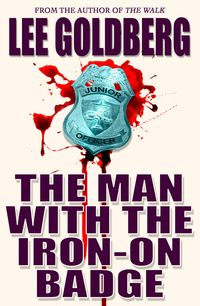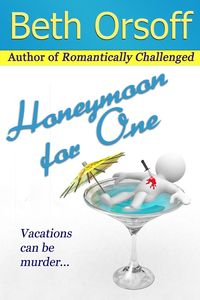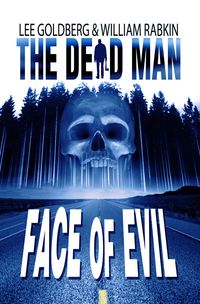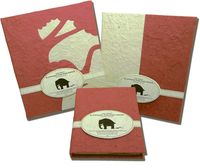The Man with the Lousy Title
 THE MAN WITH THE IRON-ON BADGE is by far my most critically-acclaimed book, but the ebook sales aren't as good as I think they could be. My theory is that the clunky title is to blame. So I'm seriously considering retitling the book and coming up with a new cover. The stage play version of the book was called MAPES FOR HIRE, but I'm not wild about that title, either.
THE MAN WITH THE IRON-ON BADGE is by far my most critically-acclaimed book, but the ebook sales aren't as good as I think they could be. My theory is that the clunky title is to blame. So I'm seriously considering retitling the book and coming up with a new cover. The stage play version of the book was called MAPES FOR HIRE, but I'm not wild about that title, either.
If you've read the book, and have some ideas for a new title, please let me know!
Looking Forward to Charlottesville
I'm doing some panels March 16-20 as a guest of the 17th Annual Viriginia Festival of the Book…but that's not why I can't wait to get there. I'm excited as a reader. The line-up they've got is incredible. Here are some highlights, including:
And here's what's sold out at press time:The Help author Kathryn Stockett in an event sponsored by John and Renee Grisham; the traditionally sold-out festival luncheon, this year with the Newshour's Jim Lehrer, and the Crime Wave luncheon with author and TV series Bones producer Kathy Reichs. The good news: that still leaves 127 other events. For the 17th Virginia Festival of the Book, here are 17 events that caught our eye.
14. Screenwriting large and small. Doesn't everyone have a screenplay lurking, or is that just in L.A.? This panels covers all the screenwriting basics. Lee Goldberg (Diagnosis Murder) takes small-screen writing. Locals Hugh Wilson (First Wives Club, Police Academy) and Paul Wagner (Out of Ireland) handle feature films and documentary writing respectively.
Mark Your Calendars
You don't want to miss this great panel at the Los Angeles Times Festival of Books:
Sunday, 5/1/2011, at 1:30:00 PM, USC Campus
Moderator - Lee Goldberg
Panelists - Thomas Perry, John Vorhaus, Don Winslow
Mark your calendars now.
Publishing Leprosy Cured
 Mid-list novelist Beth Orsoff talks on her blog about how she turned a disappointing (and all too familiar) experience at a big six publisher into success as a self-published author:
Mid-list novelist Beth Orsoff talks on her blog about how she turned a disappointing (and all too familiar) experience at a big six publisher into success as a self-published author:
My first book, “Romantically Challenged” was published in April 2006, approximately six months after the chick lit markettanked. I had a small print run, no publisher support, and, not surprisingly, my book was not a huge success (massive understatement)[…]While I was waiting for “Romantically Challenged” to be published I wrote another book, also chick lit. NAL elected not to option it and my agent started sending it to other publishers.
When that book, and a couple of others, failed to sell, she got the rights back to "Romantically Challenged" and put it,along with several of her unsold manuscripts, on the Kindle and the Nook.
Thanksgiving weekend I uploaded all three books to B&N via their PubIt program. I sold 9 books at B&N in November. In December I sold 500 books at B&N. In January 2011 I sold almost 7000 books at B&N. Between Amazon and B&N, I sold over 13,000 books in January. Will I continue to sell books at that rate? I don’t know. But I’ve already had much more success as a self-published author than I ever did as a traditionally published author, plus I get to write the books I want to write, choose my own covers, and publish on my schedule, not someone else’s.
I am hearing stories like hers every day…especially in the wake of my first "Midlist to E-List" post… and its inspiring. It used to be that when a midlist author was dropped, it was a living hell getting published again because your lukewarm sales figures would follow you wherever you went. Reinventing yourself with a new novel and a new voice was also a steep, uphill climb.
But now, for the first time ever, midlist authors not only have an alternative, but one that could actually be more lucrative and perhaps more creatively fullfilling, than sticking with their publishers. For the first time, a midlist author doesn't have to take a crappy deal just to stay in print…or feel like a literary leper when they have been dropped.
These are exciting times.
Amazon Spotlights THE DEAD MAN
 Amazon is featuring the story behind The Dead Man original book series today on their Kindle blog:
Amazon is featuring the story behind The Dead Man original book series today on their Kindle blog:
I grew up loving those "men's action adventure" paperback novels of the 60s, 70s, and 80s…series like The Destroyer, The Ninja Master, Nick Carter: Spymaster and The Death Merchant. You could find them in finer supermarkets, gas stations, 7-11s and bookstores everywhere. They were the male equivalent of Harlequin romances, though the only romance was often between a man and his AK-47.
The books were short and tightly-written, with hard-boiled heroes, outrageously sexy women, and gleefully over-the-top plots. Nobody would ever mistake them for great literature, but they were enormous fun to read…and to write. I know, because I broke into publishing in the mid-1980s writing one of those series–357 Vigilante by "Ian Ludlow"–while I was still in college.
Sadly, the "men's action adventure" series novels are virtually extinct now, early victims of the narrowing of the paperback marketplace.
But the Kindle offers the perfect medium for the revival of the genre..
Please spread the word. Amazon was kind enough to offer me the opportunity to post on their blog and I want to thank them by bringing as many new readers to their blog as I can!
A Dose of Reality
Amanda Hocking may be single-handedly responsible for driving thousands of newbie authors to self-publishing, eager to replicate her astonishing success. But today she gave them a dose of reality. I just wonder how many of them will listen…
Everybody seems really excited about what I'm doing and how I've been so successful, and from what I've been able to understand, it's because a lot of people think that they can replicate my success and what I've done. And while I do think I will not be the only one to do this – others will be as successful as I've been, some even more so – I don't think it will happen that often.
Traditional publishing and indie publishing aren't all that different, and I don't think people realize that. Some books and authors are best sellers, but most aren't. It may be easier to self-publish than it is to traditionally publish, but in all honesty, it's harder to be a best seller self-publishing than it is with a house.
I don't think people really grasp how much work I do. I think there is this very big misconception that I was like, "Hey, paranormal is pretty hot right now," and then I spent a weekend smashing out some words, threw it up online, and woke up the next day with a million dollars in my bank account.
She goes on to talk about the years of hard work she put into it…and the difficulty of finding good, professional copyeditors…and the huge amount of time she's spent marketing. And yet, she acknowledges that a lot of her success comes down to simple luck (she points out other self-published writers she thinks are every bit as good as she is and yet still have not broken through). Then she makes this point, which I'm sure few newbies want to hear:
I guess what I'm saying is that just because I sell a million books self-publishing, it doesn't mean everybody will. In fact, more people will sell less than 100 copies of their books self-publishing than will sell 10,000 books. I don't mean that to be mean, and just because a book doesn't sell well doesn't mean it's a bad book. It's just the nature of the business. Self-publishing and traditional publishing really aren't that different. One is easier to get into but harder to maintain. But neither come with guarantees. Some books will sell, some won't.
Great advice…and I applaud her for giving it.
Midlist Becomes the E-List
Daily Finance reports that the shuttering of Borders, and the dire situation facing bookstores in general, make it even harder for mid-list authors to break-through, much less even stay in print. A Borders sales exec says that even if the company manages to survive, mid-list authors are facing doom.
· Borders will likely be even more cautious about investing in midlist authors. While their new loans from GE Capital will allow them to finance, among other things, the purchase of new stock, Borders is not in any position to gamble. They're likely, in my opinion, to skipmore midlist titles than usual and to only spend their money on names they know they can sell. This will be exacerbated by the aforementioned store closings.
· Publishers may offer lower advances, especially on midlist titles.The industry has depended on Borders as a major market for new titles. If the publisher can't trust Borders to take a sufficiently large number of copies of a given title, this will factor into their profit and loss statements. As a result, they may advance less money to authors in order to increase the odds that any given acquired title will earn out.
Publishers are going to double-down on their bestsellers and their established, successful franchises — and so are bookstores. That's already the case at the biggest booksellers of all, the big-box general retailers like Wal-Mart, K-Mart and Costco, where mid-list authors are already barely represented on their limited shelf space.
It's no wonder that more and more midlist authors like me are opting to self-publish — which can be far more lucrative, and far less risky, that a publishing contract, especially if you can get back the rights to your backlist.
Poop Paper
 Now they are making stationery out of pachyderm poop. Obviously, this is going in my next MONK book. Here's an excerpt from the Los Angeles Times story:
Now they are making stationery out of pachyderm poop. Obviously, this is going in my next MONK book. Here's an excerpt from the Los Angeles Times story:
Vijender Shekhawat's big break came while visiting a shrine near the Amber Fort in Jaipur, as he glanced down at the pile of elephant dung he had just failed to avoid. A struggling maker of handmade paper, he noticed that the texture of the plant-eating animal's manure was a lot like wood pulp.
Eureka! he thought. Pachyderm poop paper.
[…]Shekhawat, who believes he was India's first elephant dung papermaker when he launched the venture eight years ago, uses 3,300 pounds of droppings a week. The dung is first washed, then boiled with baking soda and salt to reduce the smell, beaten to a pulp, forced through a sieve and flattened into sheets. Drying takes a day to, during rainy season, a week.
At one point, Shekhawat fed the elephants turmeric hoping to create yellow paper. That failed. Now he adds organic dyes late in the process, including beet juice for red paper, dried pomegranate skins for gray and the castor oil plant for green.
He now produces 2,000 2-by-3-foot sheets a week, which sell as far afield as the United States and Europe.



